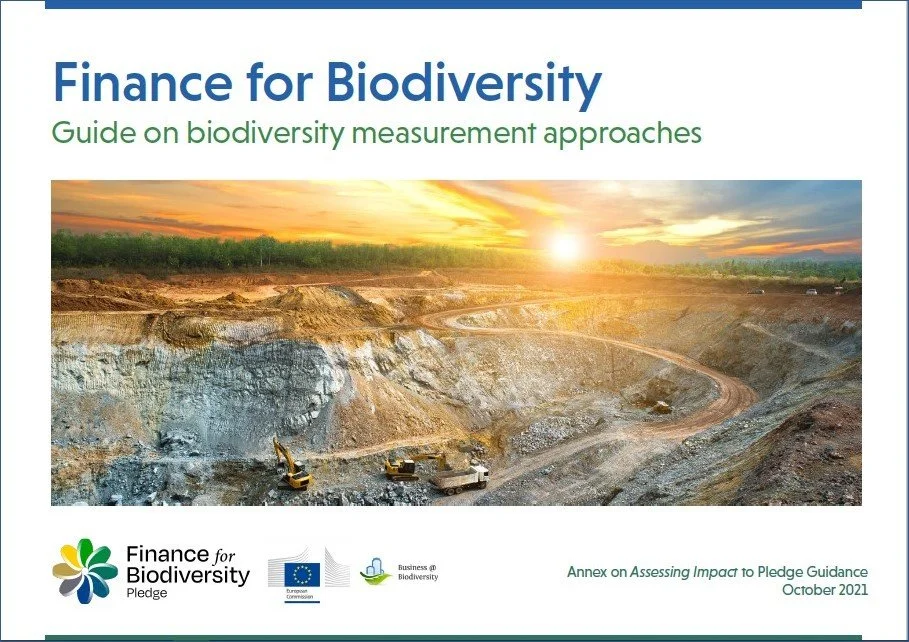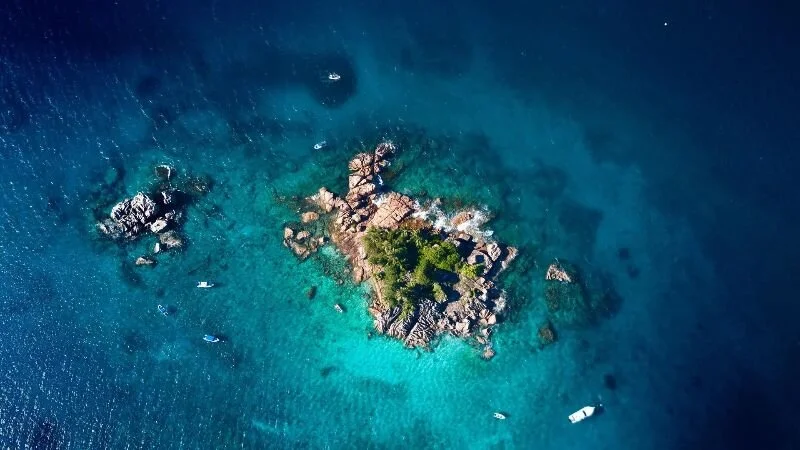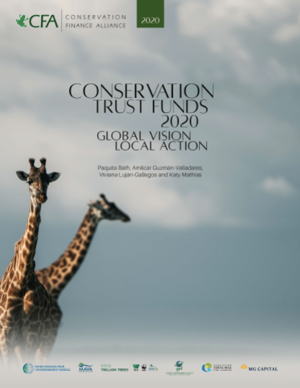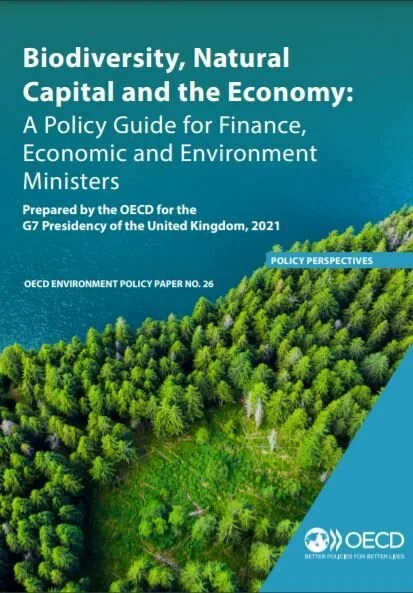ICRI has published a new report on the current state of coral restoration funding.
A desktop analysis identified 61 potential funders and an online survey gathered perspectives and funding information from 137 coral reef restoration managers and practitioners. Altogether, US$258 million has been invested in coral reef restoration efforts across 56 countries in the last decade, which is encouraging but still a small fraction of the US 1.9 billion reported for coral reef and associated ecosystems between 2010 and 2016 (UNEP et al. 2018).
Overview of Initiatives for Financial Institutions
The Overview of biodiversity-related initiatives for financial institutions is meant to help financial institutions understand what initiatives are out there, and who is doing what. It was launched in April by the Finance for Biodiversity Foundation, UNEP FI, the PRI, and the Finance@Biodiversity Community. The overview is updated quarterly.
Guide for Financial Institutions on Biodiversity Measurement
The Guide on biodiversity measurement approaches for financial institutions was launched during a webinar in April 2021. It is made by the Finance and Biodiversity Community (F@B Community) and workstream Methods, both part of the EU Business@Biodiversity Platform, and the Finance for Biodiversity Foundation. The Guide is updated quarterly.
Nature-based Solutions in Latin America and the Caribbean: Financing Mechanisms for Regional Replication
Innovative financing models are emerging globally to advance nature-based solutions (NBS) that can cost-effectively enhance infrastructure performance, meet Sustainable Development Goals, and mitigate the negative impacts of climate change. Despite the potential for NBS to generate attractive returns and provide significant cost-savings, these financing models remain underutilized. Consequently, NBS are not achieving their full potential and a tranche of pent up green capital is sidelined. This report highlights five proven NBS financing strategies that leverage private finance: green bonds, blended market-rate and concessional loans, land-based financing strategies, insurance policies, and endowments. This report also outlines current barriers to the successful scaling of these financing strategies in Latin America and the Caribbean and identifies the approaches and enabling conditions needed to overcome them.
Navigating Ocean Risk: Value at Risk in the Blue Economy
Investors in 66% of listed companies are collectively at risk of losing US$8.4 trillion due to declining ocean health and climate change if business as usual continues. Even keeping global temperature rise to 2°C will result in losses of US$3.3 trillion, which highlights the importance of keeping global temperature rise to the Paris Agreement target of below 1.5oC.
Collaboration is key to accelerating a sustainable and equitable ocean economy – Report
Collaboration is key to accelerating a sustainable and equitable ocean economy – Report
A ‘Blue Economy’ – a truly sustainable and equitable ocean economy – is at a tipping point with the potential for significant acceleration and growth – but only if the right frameworks are wrapped around it. This is the key finding of a series of ground-breaking new reports from the Stockholm Resilience Centre at Stockholm University, which have been commissioned by the Ocean Risk and Resilience Action Alliance (ORRAA).
The trio of reports, some of the most comprehensive ever undertaken into levels of ocean-related investment and finance, point to the downside risk of unbalanced, inequitable and unsustainable investment decisions in the Ocean. Without a course correction, there is a clear danger of such investment increasing levels of inequality and harm to the Ocean and the communities that depend on it.
Business of Conservation Congress
Business of Conservation Congress
The Business of Conservation Conference (BCC), an initiative of the African Leadership University’s School of Wildlife Conservation, is now in its third year. Hosted in partnership with the Rwanda Development Board the conference was held virtually for the first time. BCC aims to catalyse economic development in Africa byconvening influential leaders to collaborate in tangible ways that promote Africa’s wildlife economy. It is an invitation-only inspiring, powerful convening of top leaders from all sectors committed to reframing conservation as a growth sector by attracting top talent, applying financially sustainable models and creating enabling socio-political environments for increased investment in the sector. BCC is about cross-sectoral collaboration to boost Africa’s biodiversity as a pillar for sustainable economic development.
We closed off the third quarter of the year with our Business of Conservation Conference. With over 400 virtual participants, 28 sessions and 50+ speakers and facilitators, our goal was to create a coalition of leaders who understand conservation and believe in Africa’s Wildlife Economy. We also showcased our State of the Wildlife Economy Research to effectively make a business case for conservation and emphasize that conservation and development are not mutually exclusive.
eco.Business Fund Impact Report: Five Years of Investing in Sustainability
eco.Business Fund Impact Report: Five Years of Investing in Sustainability
The eco.business Fund has published its third Impact Report, “5 Years of Investing in Sustainability”.
The publication details the fund’s activities over the past five years, supplemented by in-depth highlights from 2020. Ultimately, the activities of the fund and its partners have translated to contributing to saving 4.5 million m3 of water by financing water-efficient technologies and 37,000 liters of herbicide use avoided as of December 2020, among other achievements.
Mobilizing Institutional Investors for Financing Sustainable Development
Analysing the volumes and composition of selected institutional investors’ portfolios, this report finds that the share of investments allocated to developing countries is still limited. It also looks at the main investment drivers and considerations of these actors when operating in developing countries.
The report explores solutions to channel more of their institutional assets towards developing economies, especially through blended finance. Whilst evidence shows that risk mitigation instruments such as guarantees can contribute to lowering the perception of risks, more efforts are required to attract institutional investors in significant blended finance operations.
Finance for Nature: Bridging the Blue-Green Investment Gap to Inform the Post-2020 Global Biodiversity Framework
The Convention on Biological Diversity (CBD) is dedicated to promoting sustainable development. It recognizes the conservation and management of biological diversity is an integral part of the development process and is not simply a matter of protection. A revised and updated ten-year Strategic Plan for Biodiversity was adopted at the 10th Conference of the Parties (COP) in 2010. This plan provides an overarching framework on biodiversity for the entire United Nations system and all other partners engaged in biodiversity management and policy development. COP15 in 2020 is expected to update the Convention’s strategic plan and adopt a post-2020 global biodiversity framework for the next decade.
Among the primary and persistent challenges of the CBD Strategic Plan has been in fulfilling the promise of Target 20 on resource mobilization or, essentially, financing the plan. In recent years, a great deal of progress has been made at adapting traditional tools to the specific requirements of green and blue finance. International and national public and private sector initiatives, academic researchers and implementing organizations are developing, testing and adapting finance tools to bridge the local, national and global biodiversity investment gap. This Special Issue hopes to highlight current work in the measurement and implementation of biodiversity finance solutions globally.
Taxation of Forests in Europe: A Comparative Approach (FRENCH)
Taxation of Forests in Europe: A Comparative Approach (FRENCH)
Fondation Pour La Recherche Sur La Biodiversite
This analysis across European countries reveals broad divergence of tax rates on Forests. This implies a variance in implicit taxation on carbon storage by forests, which can have significant implications for biodiversity.
What Does It Take To Create Financial Products That Can Save The Planet?
Investors are increasingly eager to contribute to solutions for climate change and other environmental problems. But they are also looking for familiar structures, acceptable levels of risk, and competitive returns. Charlotte Kaiser ’07, managing director of The Nature Conservancy’s NatureVest, explains how the company builds financial products that attract mainstream capital while delivering conservation impacts.
Public Development Banks and Biodiversity
Financing a Sustainable Ocean Economy
[Taken from Abstract]
The ocean, which regulates climate and supports vital ecosystem services, is crucial to our Earth system and livelihoods. Yet, it is threatened by anthropogenic pressures and climate change. A healthy ocean that supports a sustainable ocean economy requires adequate financing vehicles that generate, invest, align, and account for financial capital to achieve sustained ocean health and governance. However, the current finance gap is large; we identify key barriers to financing a sustainable ocean economy and suggest how to mitigate them, to incentivize the kind of public and private investments needed for topnotch science and management in support of a sustainable ocean economy.
Interview on Conservation Trust Funds 2020: Global Vision - Local Action
Kinship Fellows
The Conservation Finance Alliance released a major report last year called Conservation Trust Funds 2020: Global Vision – Local Action. Viviana Luján Gallegos, 2015 Kinship Fellow, acted as co-author of the impressive document while 2013 Fellow Camila Monteiro served on the Task Force. Kinship Fellows caught up with Viviana and Camilla to get the skinny on this supersized report on CTFs.
Guide to Measuring Biodiversity for Financial Institutions
EU Finance@Biodiversity
As the loss of biodiversity becomes ever more urgent, financial institutions are looking for ways to quantify the impact of their finance and investment activities on biodiversity. To help them better understand the variety of biodiversity measurement approaches for financial institutions, the EU Finance@Biodiversity Community and the signatories of the Finance for Biodiversity Pledge have developed the Guide on biodiversity measurement approaches.
Natural Capital for Biodiversity Policy: What, Why, and How?
Capitals Coalition
Ahead of the CBD COP15, the Capitals Coalition launched a new report on how natural capital approaches can help mainstream biodiversity in decision-making. The publication aims to support government policymakers to play a crucial role in incentivizing and scaling sustainable solutions to global, national and local challenges by creating an enabling environment for others to adopt a capitals approach.
Dasgupta Review: A Pathway for Action for the Financial Sector
Green Finance Institute
The Green Finance Institute convened and consulted with over 40 representatives from banks, asset managers, asset owners, standard setters and conservation finance specialists to respond to the Dasgupta Review’s findings. The result is a Pathway for Action which sets out ten over-arching recommendations for the financial sector and two key recommendations for the public sector – measures governments can take to support a swifter mobilisation of private capital away from nature-negative outcomes and towards nature-positive activities.
Biodiversity, Natural Capital, and the Economy
OECD
This report provides the latest findings and policy guidance for G7 and other countries in four key areas: measuring and mainstreaming biodiversity; aligning budgetary and fiscal policy with biodiversity; embedding biodiversity in the financial sector; and improving biodiversity outcomes linked to international trade. The report shows how Finance, Economic and Environment Ministries can drive the transformative changes required to halt and reverse the loss of biodiversity.
Assessing the Economics Impacts of Environmental Policies
OECD
Over the past decades, governments have gradually adopted more rigorous environmental policies to tackle challenges associated with pressing environmental issues, such as climate change. The ambition of these policies is, however, often tempered by their perceived negative effects on the economy. Environmental policies can be designed and combined with other policies to compensate workers and industries that may lose and to emphasize their positive impacts.





















